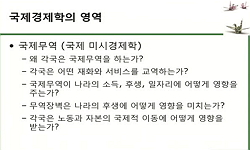In this paper, we have examined Japanese yen behavior in real and nominal sense since 1988 until now in each sub-period, subdividing the whole sample period into multiple sub-periods according to the cycles of Japanese yen fluctuations. Japanese mone...
http://chineseinput.net/에서 pinyin(병음)방식으로 중국어를 변환할 수 있습니다.
변환된 중국어를 복사하여 사용하시면 됩니다.
- 中文 을 입력하시려면 zhongwen을 입력하시고 space를누르시면됩니다.
- 北京 을 입력하시려면 beijing을 입력하시고 space를 누르시면 됩니다.

일본의 엔화변동 사이클과 통화정책: 1988년 이후 현재까지 = Japanese yen behavior during the troubled period of japanese economy
한글로보기부가정보
다국어 초록 (Multilingual Abstract)
In this paper, we have examined Japanese yen behavior in real and nominal sense since 1988 until now in each sub-period, subdividing the whole sample period into multiple sub-periods according to the cycles of Japanese yen fluctuations.
Japanese monetary policy is effective in changing the real exchange behavior in the short run through the change in the real interest rate. Facing the economic downturns, the Japanese monetary authority lowered the real interest rate, which resulted in the Japanese real yen depreciation, while facing economic upturns it increased the real interest rate, resulting in the Japanese yen real appreciation. This empirical result says that the Japanese monetary policy faced with economic downturns or upturns was successful in smoothing economic fluctuations.
The other striking empirical evidence is that Japanese real yen depreciation was induced by the relative stagnant productivity of Japanese tradable sectors. During the whole sample period(the first quarter 1989-the fourth quarter of 2014), 1% fall of Japanese productivity of tradable goods relative to that of United States causes the bilateral(Japn versus U.S.) real yen to decrease by 0.3%. The relative stagnant Japanese economy to the U.S., accompanying the relative fall in the tradable goods’ productivity causes the Japanese real yen to depreciate, which helps recovering the troubled Japanese economy a little bit.
To sum, Japanese monetary policy is effective in smoothing the business cycle, while the Japanese real yen deprecation due to the stagnant Japanese economy reltive to U.S. may be helpful in recovering the troubled economy.
국문 초록 (Abstract)
본 논문은 1988년 이후 현재까지 일어난 엔화의 변동 사이클을 기간별로 특정하여 엔화가치의 단기적 변동을 초래한 통화량 변동과 같은 명목적 요인과 엔화의 중장기적 변화를 초래하는 교...
본 논문은 1988년 이후 현재까지 일어난 엔화의 변동 사이클을 기간별로 특정하여 엔화가치의 단기적 변동을 초래한 통화량 변동과 같은 명목적 요인과 엔화의 중장기적 변화를 초래하는 교역재 부문의 생산성의 변화와 같은 실질적 요인을 실증적으로 분석하고 식별하였다.
설정한 모든 기간에서 나타난 현상은 아니지만, 단기적 경기침체에 대응하는 일본의 통화 팽창정책은 실질 이자율을 떨어뜨리고 이것이 엔화가치의 실질적 하락을 초래하면서 일본의 대외 경쟁력을 회복시키는 데 기여하였다. 또한 단기적 경기확장에 대응한 일본의 긴축적 통화정책은 실질이자율을 상승시키고 이것이 엔화의 실질 가치를 증가시켜 일본의 수출 경쟁력을 둔화시켜 경기변동을 순화시키는 데 기여하였다.
일본의 실질환율의 변동은 통화량 변동과 같은 명목 충격이외에 생산성 충격과 같은 요인에 의해 영향을 받았다. 일본의 경제 침체에서 비롯된 일본 교역재 부문 생산성 하락이 엔화의 실질가치를 하락시켰다. 추정한 결과에 의하면, 전 표본기간(1989년 1사분기-2014년 4사분기) 동안, 미국 대비 일본의 교역재 부문의 생산성이 1% 하락할 때 일본 엔화의 실질가치는 달러화에 비하여 0.3% 하락하였다. 즉 교역재 부문의 상대적 생산성의 하락이 엔화의 실질가치를 하락시켜 일본의 대외 경쟁력을 부분적으로 나마 중-장기적으로 회복시키는 데 기여했다고 볼 수 있다.
요약하면 일본의 경기변동에 대응한 통화정책은 유효하였고, 일본 경제의 상대적 침체에서 비롯된 엔화의 실질가치의 하락이 일본 경제를 침체의 늪에서 벗어나는데 어느 정도 기여했다고 볼 수 있다.
참고문헌 (Reference)
1 Rogoff, K., "Traded Goods Consumption Smoothing and the Random Walk Behavior of the Real Exchange Rate" 10 : 1-29, 1992
2 Asea, P. K., "The Balassa-Samuelson Model: A General Equilibrium Appraisal" 2 : 244-267, 1994
3 Obstfeld, M., "Japan’’s Bubble, Deflation, and Long-Term Stagnation" MIT Press 2011
4 김진옥, "Japanese Yen Behavior since 1980" 한국경제연구학회 14 (14): 581-606, 2013
5 Anderson, R. G., "Japan as a Role Model?" Federal Reserve Bank 2013
6 Obstfeld, M., "Foundations of International Macroeconomics" MIT Press 1996
7 McKinnon, R. I., "Dollar and Yen: Resolving Economic Conflict between the Unites States and Japan" MIT Press 1997
1 Rogoff, K., "Traded Goods Consumption Smoothing and the Random Walk Behavior of the Real Exchange Rate" 10 : 1-29, 1992
2 Asea, P. K., "The Balassa-Samuelson Model: A General Equilibrium Appraisal" 2 : 244-267, 1994
3 Obstfeld, M., "Japan’’s Bubble, Deflation, and Long-Term Stagnation" MIT Press 2011
4 김진옥, "Japanese Yen Behavior since 1980" 한국경제연구학회 14 (14): 581-606, 2013
5 Anderson, R. G., "Japan as a Role Model?" Federal Reserve Bank 2013
6 Obstfeld, M., "Foundations of International Macroeconomics" MIT Press 1996
7 McKinnon, R. I., "Dollar and Yen: Resolving Economic Conflict between the Unites States and Japan" MIT Press 1997
동일학술지(권/호) 다른 논문
-
- 한국국제금융학회
- 김광환
- 2016
- KCI등재
-
Financial Constraint and Corporate Employment: Evidence from the Emerging Economy
- 한국국제금융학회
- 박단비
- 2016
- KCI등재
-
2008년 글로벌 금융위기이후 외국인 증권투자행태 변화와 시사점
- 한국국제금융학회
- 허찬국
- 2016
- KCI등재
분석정보
인용정보 인용지수 설명보기
학술지 이력
| 연월일 | 이력구분 | 이력상세 | 등재구분 |
|---|---|---|---|
| 2028 | 평가예정 | 재인증평가 신청대상 (재인증) | |
| 2022-01-01 | 평가 | 등재학술지 유지 (재인증) |  |
| 2019-01-01 | 평가 | 등재학술지 유지 (계속평가) |  |
| 2016-01-01 | 평가 | 등재학술지 선정 (계속평가) |  |
| 2014-01-01 | 평가 | 등재후보학술지 선정 (신규평가) |  |
학술지 인용정보
| 기준연도 | WOS-KCI 통합IF(2년) | KCIF(2년) | KCIF(3년) |
|---|---|---|---|
| 2016 | 0 | 0 | 0.04 |
| KCIF(4년) | KCIF(5년) | 중심성지수(3년) | 즉시성지수 |
| 0.18 | 0.14 | 0.486 | 0 |





 KCI
KCI





